How to Make Cat Food at Home: 3 Recipes
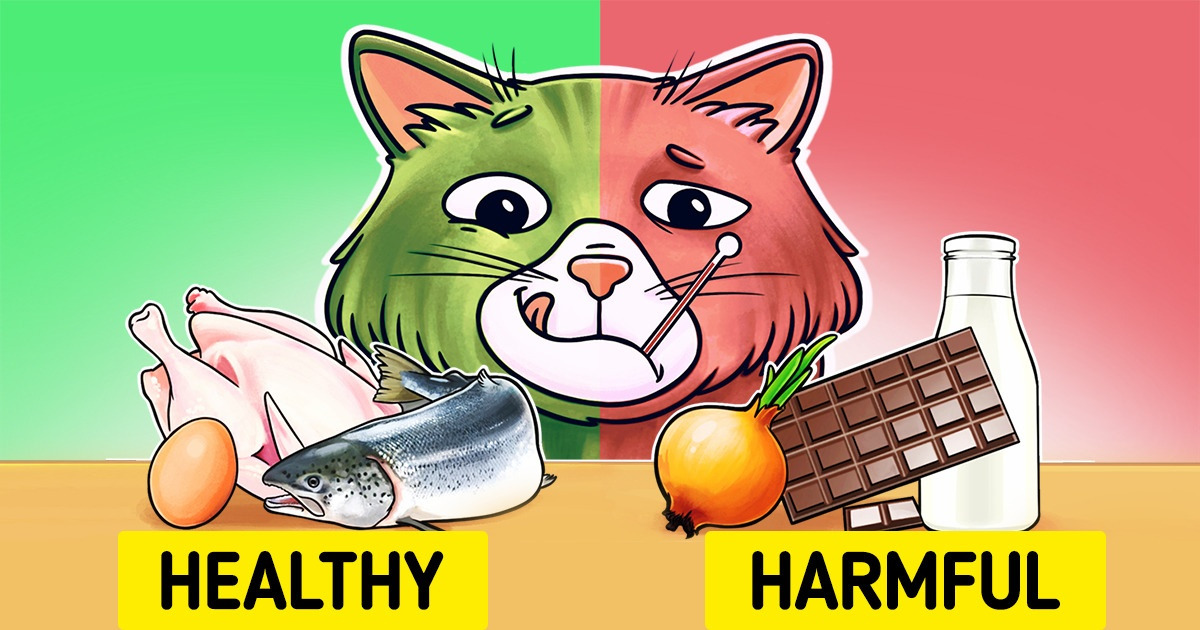
If your cat has allergies or sensitivities to certain ingredients, purchasing pre-made food can turn out to be a hassle. To counteract that, you can opt to make homemade cat food where you have full control over the recipe and ingredients.
With that in mind, 5-Minute Crafts gathered some healthy recipes you can easily make for your pet.
❗ Always consult your veterinarian before starting your pet on a homemade diet.
Differences between store-bought and homemade cat food
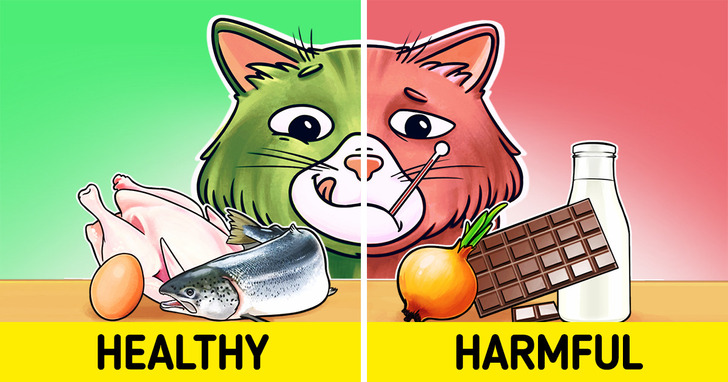
Before making a decision, it’s best to take a look at the pros and cons of a homemade cat diet. Every cat is a carnivore by nature, and they benefit a lot from eating meat. If you’re going to make the switch to a homemade diet for your cat, it’s extremely important you balance it correctly.
Pros:
✅ Complete control over the ingredients used
✅ Possibly better quality nutrition
✅ Choosing the type of meat according to your cat’s preferences
✅ Mixing any supplements your cat takes directly into the food
✅ Highly customizable
Cons:
❌ Can turn out to be more expensive
❌ Takes more time to prepare
❌ Getting used to homemade food so it won’t want to switch back to store-bought
❌ Trying to achieve the appropriate nutrition levels can be tricky
❌ Having to know what cats can and can’t eat (onions, milk, chocolate, etc)
Recipe #1: raw chicken and salmon
Ingredients:
- 700 g of raw chicken wings (with bone and skin)
- 100 g of raw salmon (with bone)
- 100 g of raw chicken heart
- 50 g of raw beef kidney
- 50 g of raw chicken liver
- 1 whole egg (raw with shell)
- 1 teaspoon of the taurine supplement
- 2 cups of water
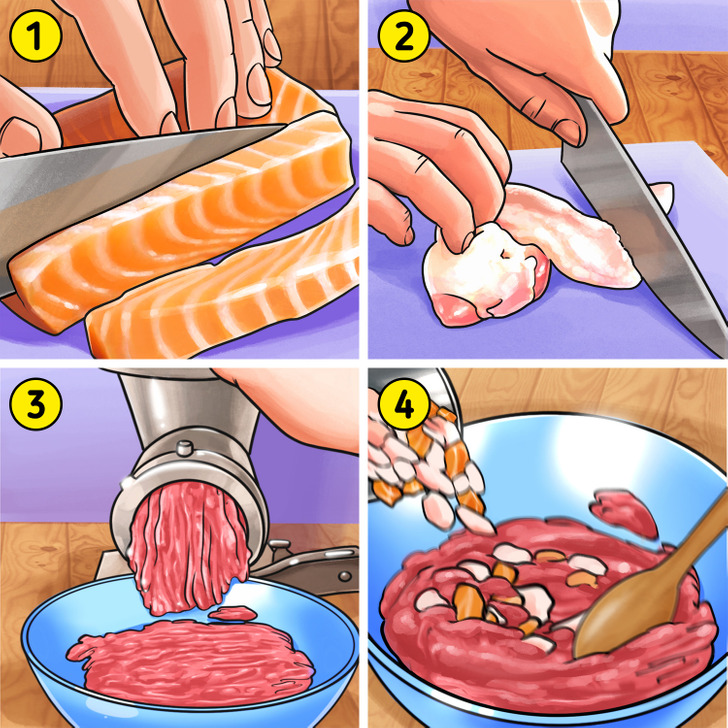
Instructions:
- Start by cutting the salmon and meat into chunks that can fit through a meat grinder.
- For the chicken wings, split them as needed so they fit through the grinder.
- Get a bowl and place it under the grinder to feed the meat and organs through.
- Now you can add the egg, taurine, and water to the mixture and combine everything. Lastly, divide the mixture into portions and feel free to refrigerate or freeze it.
Note: If you don’t own a meat grinder, you can instead use a blender or a food processor. If you don’t have any of those either, you can instead begin by pureeing the meats with the egg and water.
Recipe #2: cooked rabbit and poultry
Ingredients:
- 2 to 2.25 pounds of whole rabbit carcass
- 75 to 1 pound of boneless chicken or turkey thighs
- 2 eggs (raw yolk, white, slightly cooked)
- 10,000 mg of fish oil
- 400 IU of vitamin E
- 50 mg of vitamin B complex
- 2,000 mg of taurine supplement
- 1 teaspoon of lite iodized salt
- 1 cup of water
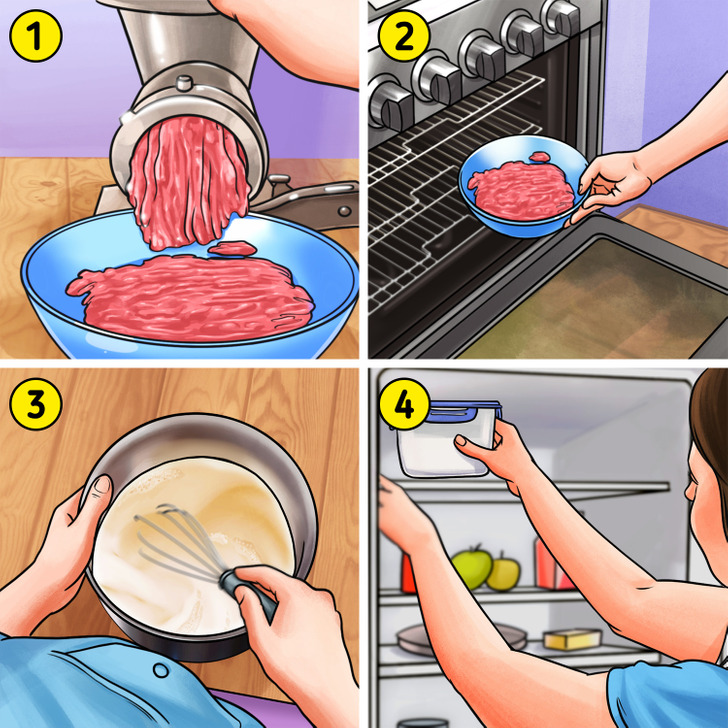
Instructions:
- Begin by grinding the rabbit carcass and chopping the chicken or turkey into small pieces.
- Then bake the poultry thighs at 350ºF for 15 to 20 minutes, but leave 50% of the meat raw. While it’s baking, mix the dry supplements in a bowl.
- Grab the fish oil, egg yolks, and water and whisk them together to form a slurry.
- In a bowl, pour the slurry into the ground mixture. You can now portion the mixture and place it in the refrigerator or freezer.
Recipe #3: chicken and rice
Ingredients:
- 1/4 cup of cooked chicken breast
- 1/2 cup of long-grain steamed rice
- 1/2 ounce of chopped canned clams (in juice)
- 1 tablespoon of chicken fat
- 1/8 teaspoon of potassium chloride (salt substitute)
- 1/4 of a multi-vitamin tablet (crushed)
- 1/10 vitamin B complex tablet (crushed)
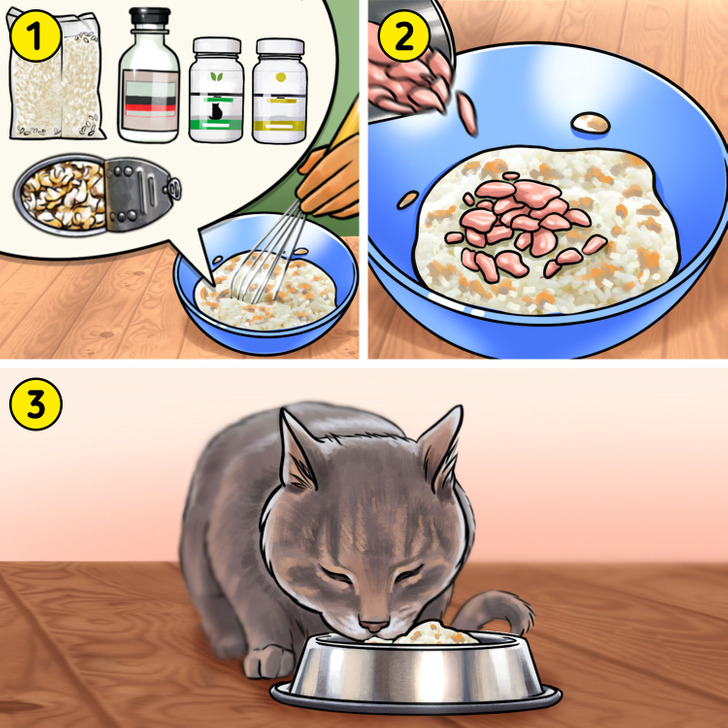
Instructions:
- Set the chicken aside and prepare the ingredients as desired.
- Cut up the chicken and mix it with the rest of the ingredients.
- You can now serve this meal to your cat, but remove the leftovers after 30 minutes.
Notes:
- This single-serve recipe is easy to scale by simply measuring the ingredients to make larger batches, but it’s not intended to be a complete diet.
- Don’t season the chicken and rice.
- If you want to store larger portions, combine the chicken, rice, clams, and chicken fat apart from the dry supplements and add them in prior to serving.